Res Life Trends Accelerate as Campuses Re-Open Amid COVID-19
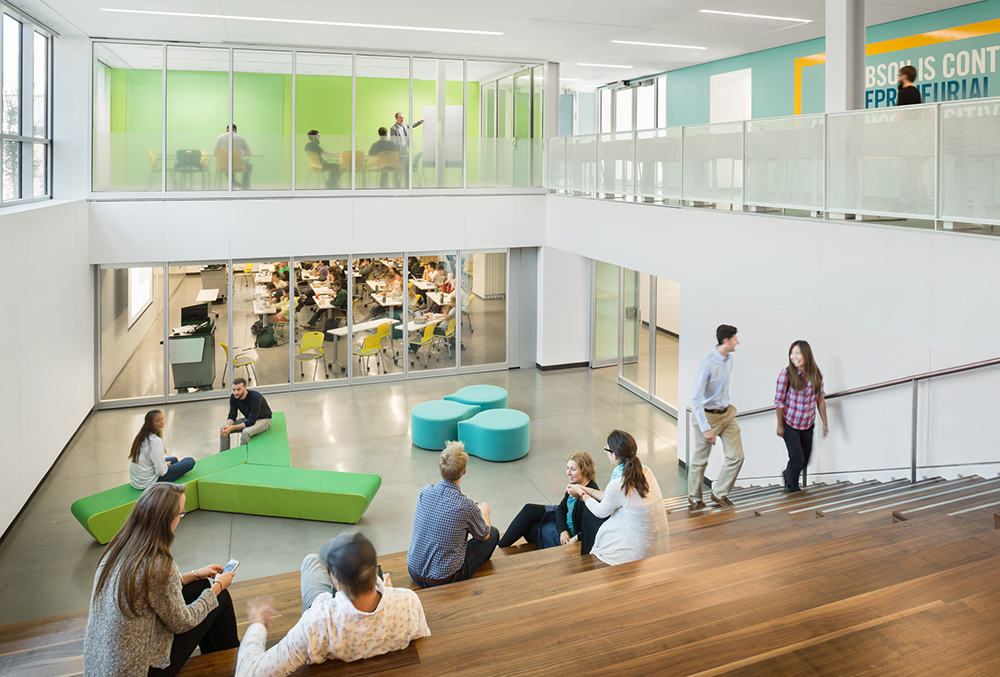
 Sasaki
Sasaki

After the massive effort to transition to online learning this spring, and looking ahead to a fall semester that will play out in the midst of a global pandemic, college administrators and students are asking themselves the same questions: not just how a fall semester on campus could proceed, but why should we return to campus at all?
From the beginning of the lockdown, students have been answering the question of why they need a residential college experience. While Zoom study sessions, online meetings, and social events can fill some basic needs for social connections, students have come to appreciate the ways, subtle and substantial, that in-person interaction defines the college experience. Some students have even formed “quarantine campuses,” recreating the close-knit community of a college dorm even after their institutions closed for the semester.
The value of a residential campus is especially significant for vulnerable communities. First-generation and other disadvantaged students – already at a higher risk of not graduating – benefit from in-person programming designed to support their college experience, as well as from the social support that living-learning communities can provide. For some students, abandoning the residential experience means far more than disconnection from community: colleges often serve as students’ primary source of food security, health care, employment, and housing.
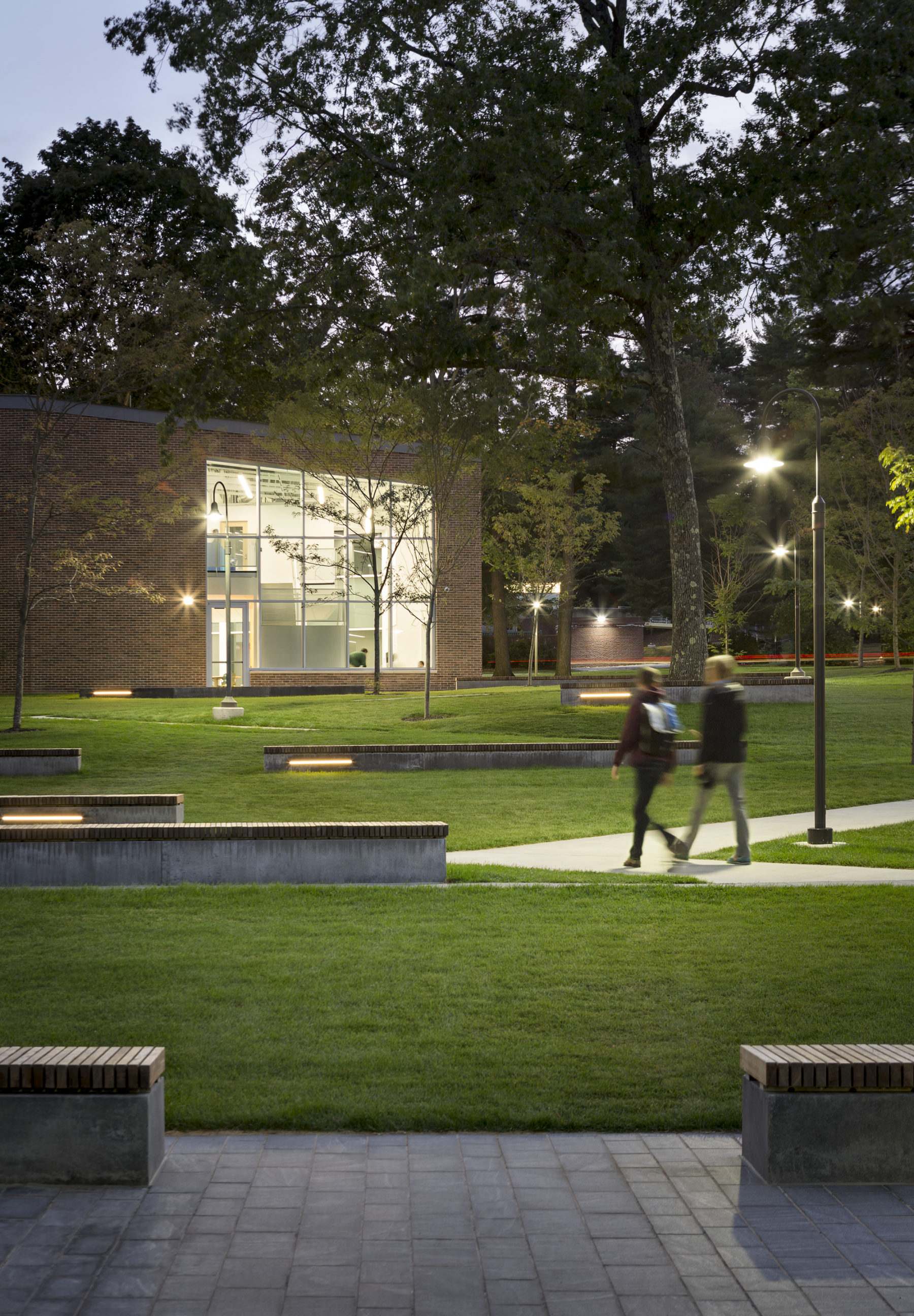
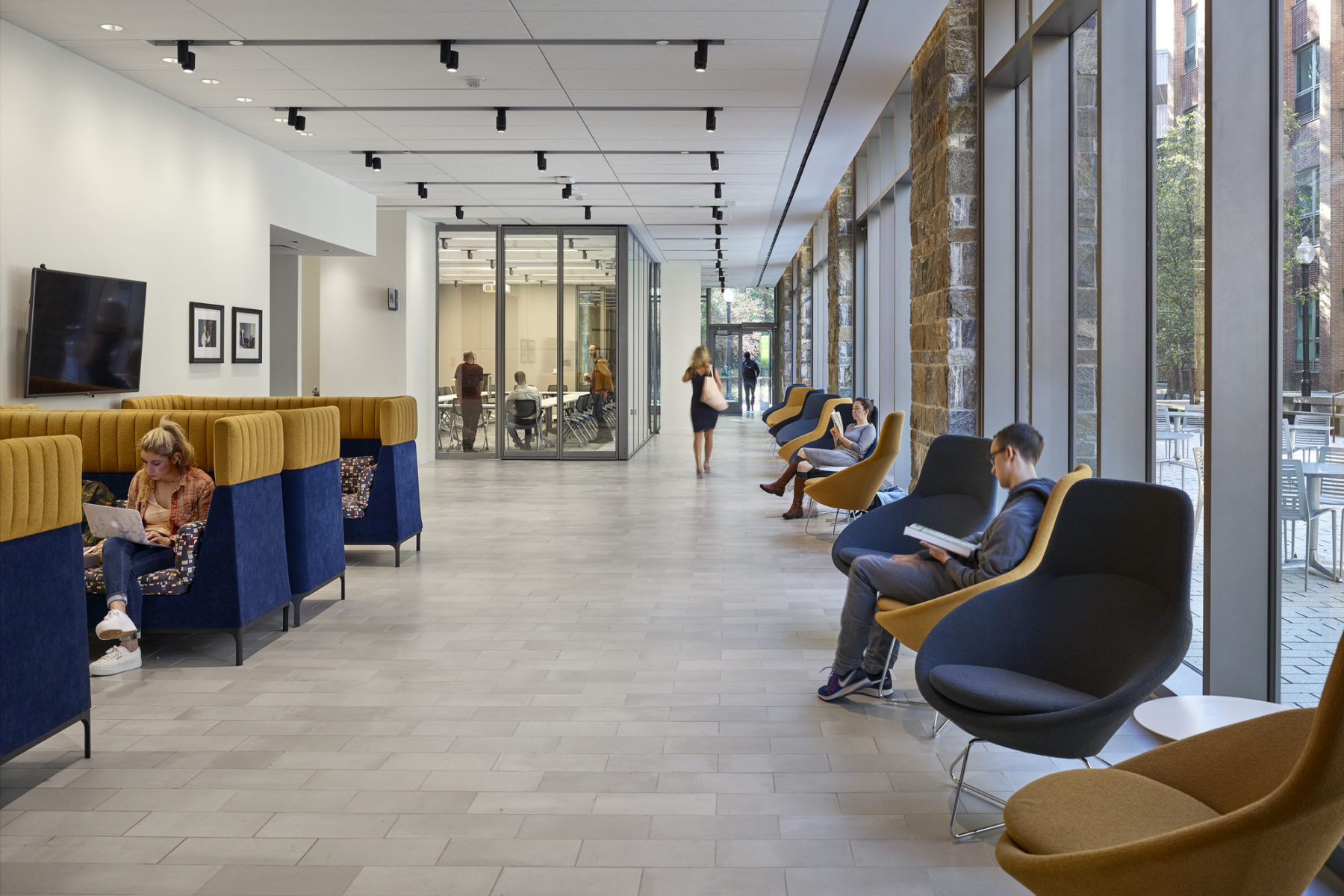
With these concerns and myriad others in mind, many colleges have resolved to return to campus in the fall. Now it’s up to administrators and designers to help answer the question of how to make residential life as safe as possible without sacrificing the qualities that define the college experience. As designers of residence halls, we at Sasaki are invested in seeing how these facilities can adapt to the challenges COVID-19 presents, and learning what we can from these changes.
When it comes to residence halls, we see COVID-19 not as a paradigm shift, but a gear shift: existing trends in res hall design have been kicked into overdrive, meaning changes that would normally take years have happened almost overnight. In our own recent and ongoing projects, we’ve seen an acceleration of four existing trends, in particular:
Well before the emergence of COVID-19, the current generation of students has sought more privacy than any generation previously has. This desire led to reimagined bathroom design, increased ratios of single to double bedrooms, and privacy gradients across common social spaces. Schools have also become attuned to providing more private living quarters for students of all genders and mobilities to live comfortably, and supporting better mental health with more private space.
Now, in the context of a global health crisis, these characteristics support appropriate social distancing and have a direct impact on student health. In the long term, if the digital learning and public health transformation continues to challenge the value of an on-campus education, residence halls will need to prove their value by offering a desirable, supportive and safe balance of privacy and community. We see this play out in schools across the country.
At a college in Texas, competition with the private market drove the need for individual bathrooms for each bedroom in student apartments. While this was intended as luxury amenity, with COVID-19’s onset this configuration is seen as essential for bringing students back to campus in a safe environment with a high level of personal security.
For one Mid-Atlantic institution, new residence halls were designed for sophomores, with a unit type striking a middle ground between the traditional doubles with group bath down the hall that most first-years live in, and the apartments (on- or off-campus) that upper year students move into. This unit type is what we call a semi-suite: either two double bedrooms or a single and a double, with bathroom facilities shared by these 3-4 students. There is no living room; instead common lounge and kitchen spaces on each floor provide social spaces. Although 75% of residents will share a bedroom when the building is at normal occupancy, the semi-suite unit type offers privacy in the bathrooms and a sense of private space in the transition from the hall to the unit. This fall, the school has the option to have all of the bedrooms function as singles, reducing occupancy by around one third. As important, the bathroom configurations allow for students to share with no more than one other person, an option that students are particularly interested now, as health and safety concerns remain top of mind.
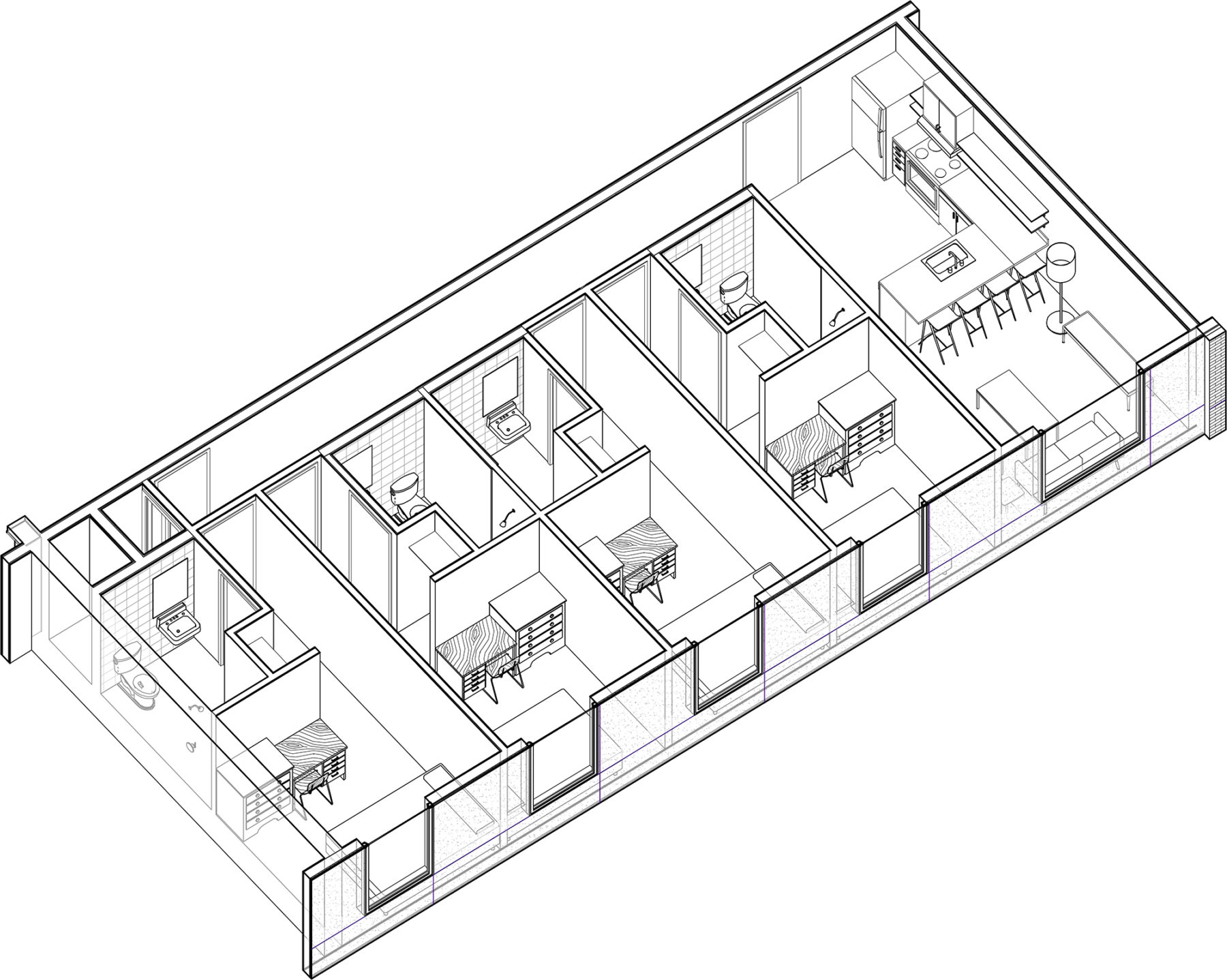
This generation of students seeks greater privacy, which has created flexibility for unforseeable new challenges presented by COVID-19
Flexibility used to mean that TV rooms could be converted to collaborative study spaces, computer labs could become maker spaces and, in a pinch, a large double room could be triple. Now, as colleges scramble to set up quarantine dorms, arrange housing pods, re-organize food service, and redefine social cohorts, flexibility is even more valuable as it allows us for immediate adaptation and long-term evolution.
At the same Mid-Atlantic school previously mentioned, their new residence hall’s division into wings gives them valuable flexibility in this time period. The initial reasons for designing separate wings were both social and architectural. The 750-bed project is broken up into six wings, each with separate entrances. Each floor of each wing has its own common space and residential advisor (RA), and forms a mini community of 25-30 students. This fall administrators are working on a plan to encourage students to form quarantine cohorts of students with whom they can freely socialize. The typical floor, especially at temporarily reduced occupancy, turns out to be well-suited to this cohort living model and will provide flexibility on an ongoing basis to weather this health crises and a host of other unforeseen events, should they arise down the line.
At a New England flagship campus flexibility is an asset as they think about logistical preparation for the annual welcoming of students to campus. Their first floor multipurpose spaces designed for large programs and social gatherings will be repurposed to support social distancing during move-in day, a time that traditionally brings both students and their families to campus. This event will require to be closely monitored to provide both safety for students and still allow families to support their students’ transition to campus life.
A residence hall is more than just an assemblage of bedrooms and bathrooms. Some of our most formative moments in college take place in lounges, study rooms, shared kitchens, etc. Now with COVID-19, we’re seeing these spaces considered for more uses than ever, hosting student clubs, replacing library study spaces, and serving as swing space for de-densification and expansion of complementary student life functions like dining. Students who are on campus engaging in online classes from their dorm rooms will also rely more heavily on spaces outside their rooms to get a change of scenery. With the increased focus on health and wellness issues, the importance of getting students out from behind their screens cannot be overstated. Far from frivolous amenities, these spaces form a key component of the residential experience and a crucial asset in a college’s space inventory.
During a pandemic some third-spaces are particularly valuable for their ability to convert to meet temporary acute needs. One college we are working with is exploring whether to potentially use their fitness center as a satellite food service location to reduce the concentration of students at the main dining halls. Having convenient and safe access to food across distributed locations on campus will certainly put fearful students and families at ease.
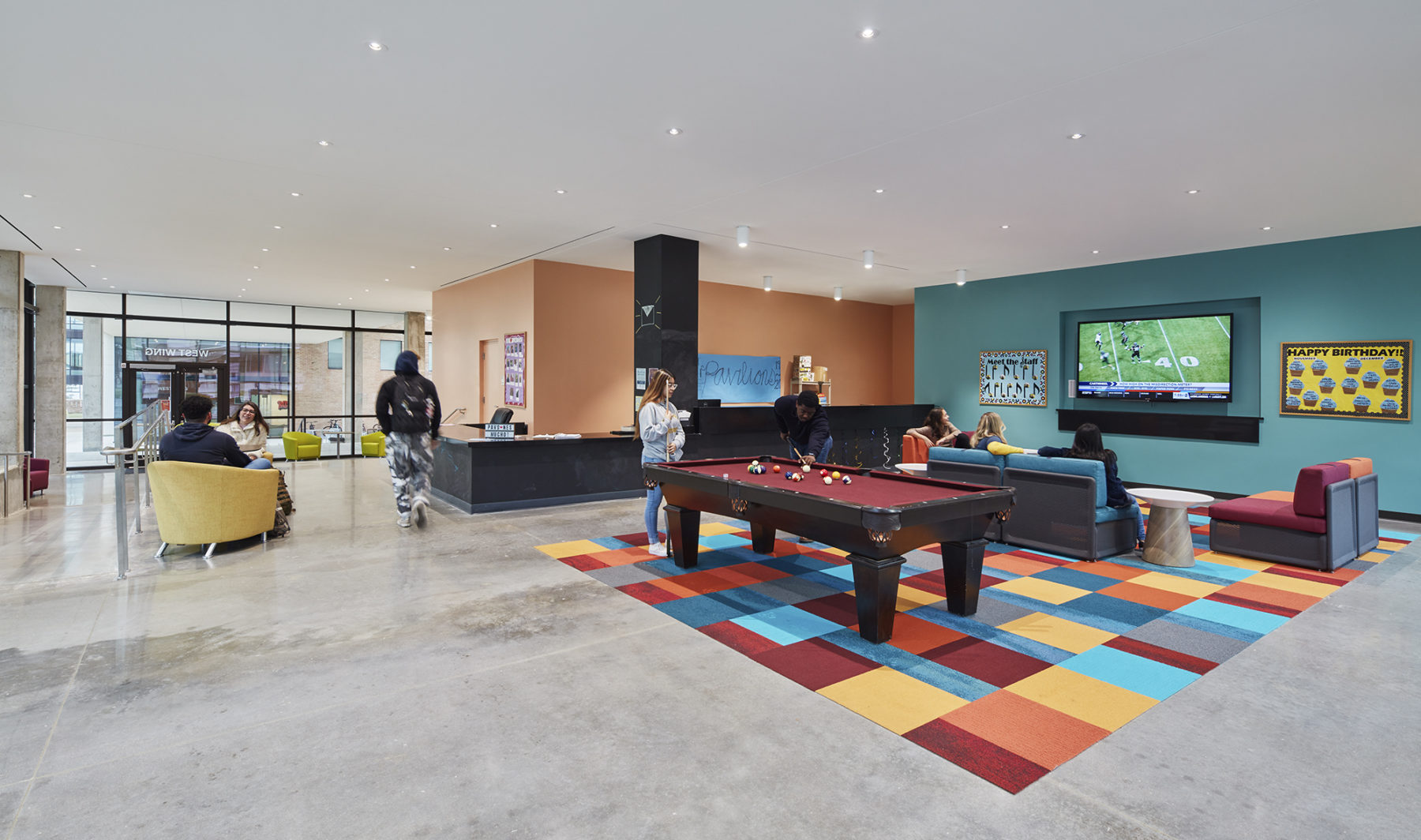
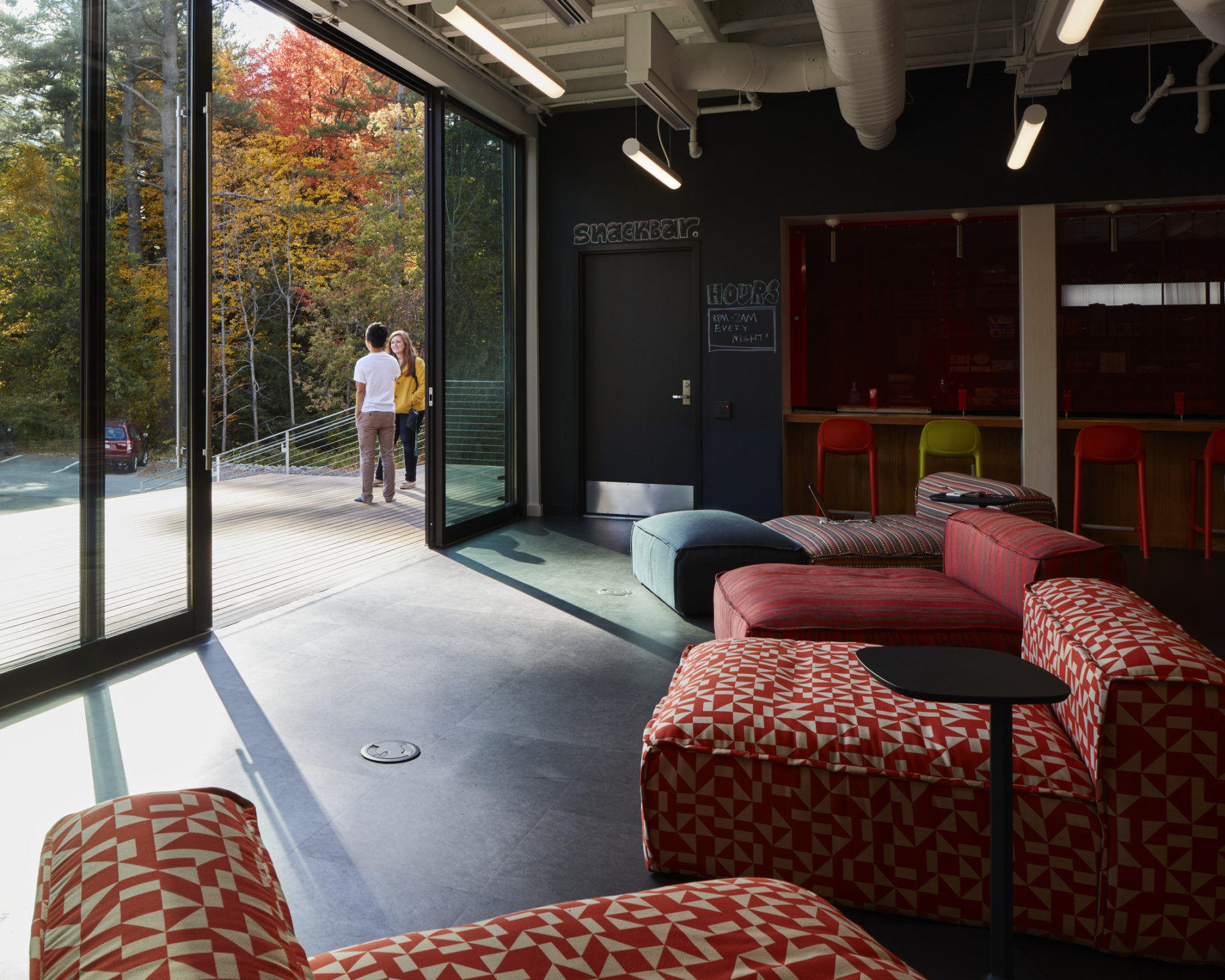
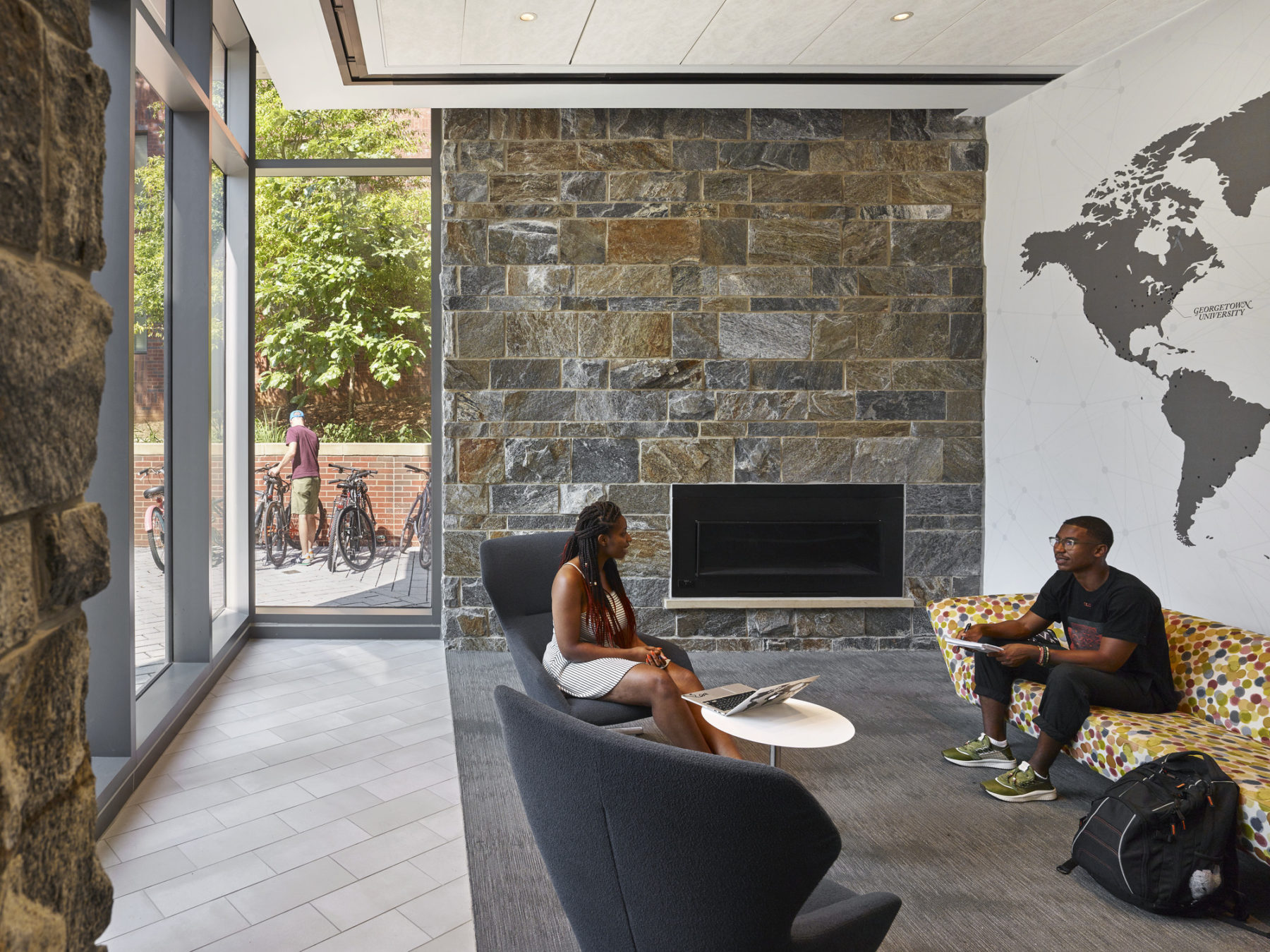
Outdoor space is often associated with students’ most memorable campus experiences. These are the settings for hanging out with friends, celebrations, demonstrations, recreation, and quiet reflection. And though there may be fewer large-scale events held on these outdoor quads and fields, these spaces take on additional significance in light of COVID-19. Epidemiologists are clear that socializing outdoors rather than indoors supports reduction of viral transmission, so supporting access to these spaces throughout the year becomes all the more important. While designers can’t control the weather, building and landscape can combine to make outdoor spaces that are responsive to the local climate and provide seasonal comfort.
This was the case at the afore-mentioned New England flagship campus where the design team used micro-climate modeling of the building and landscape to develop outdoor spaces tuned to provide comfort during spring and fall shoulder seasons. In addition to climatic comfort, outdoor terraces have electrical convenience outlets, Wi-Fi, and ample flexible and fixed seating – practical considerations that will support open-air socialization and study while helping students stay safe.
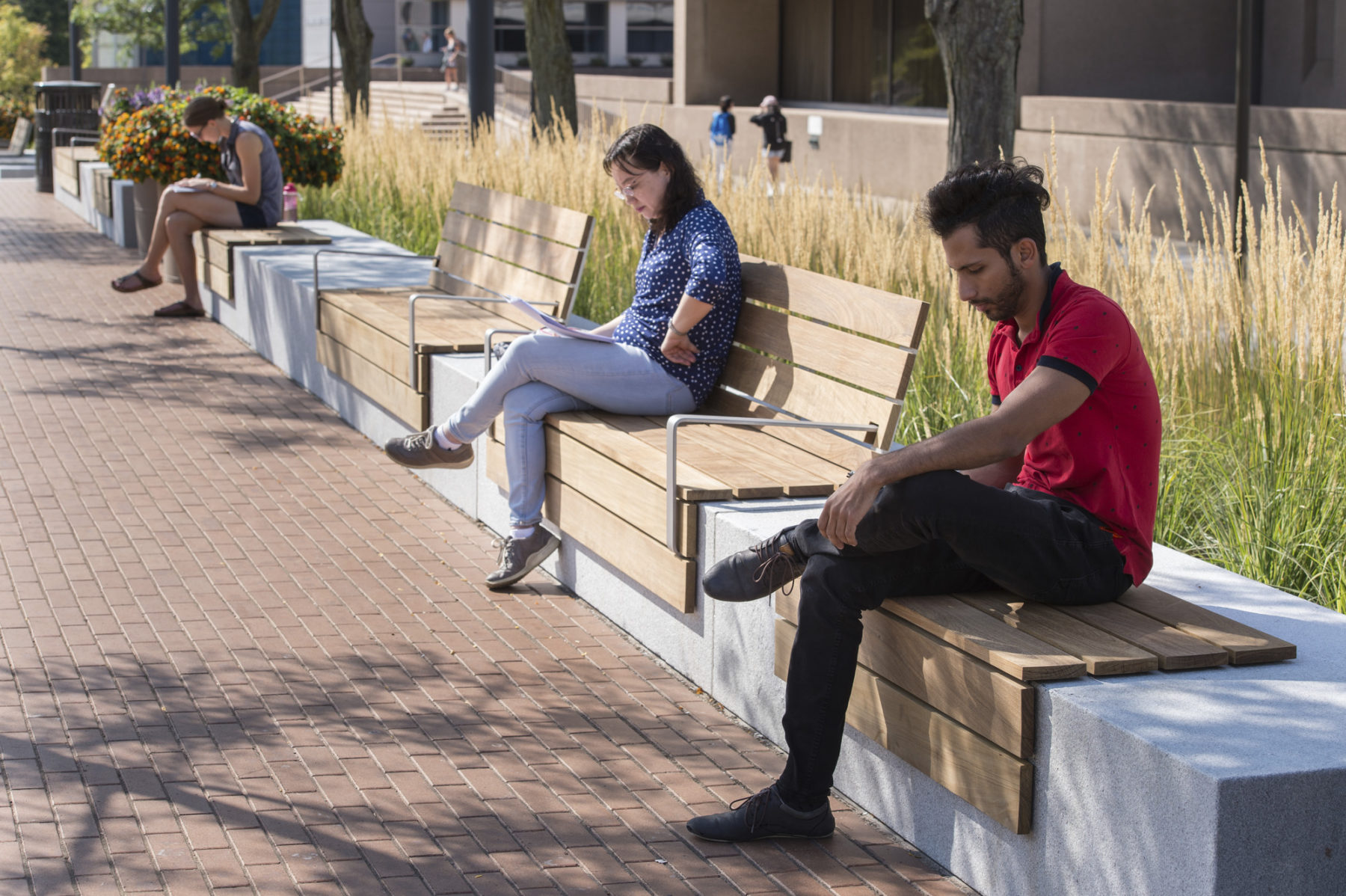
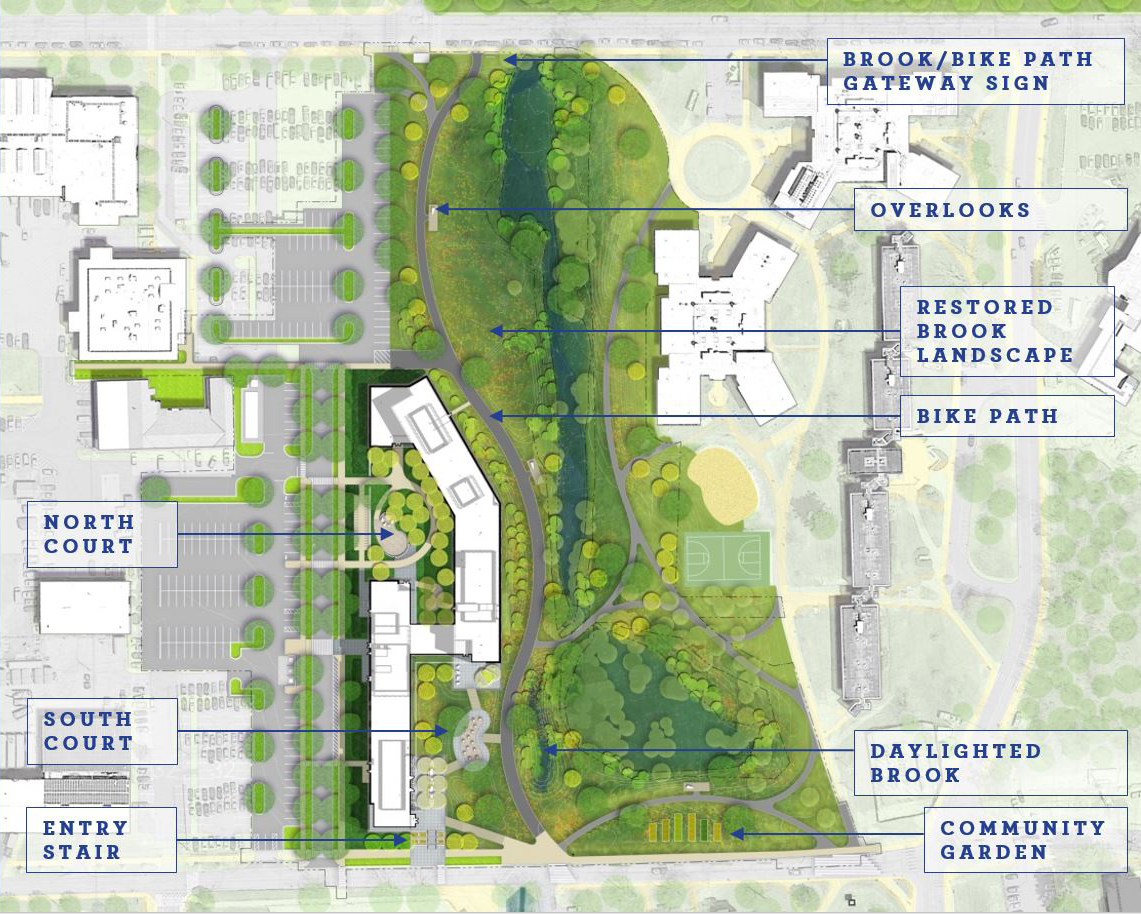
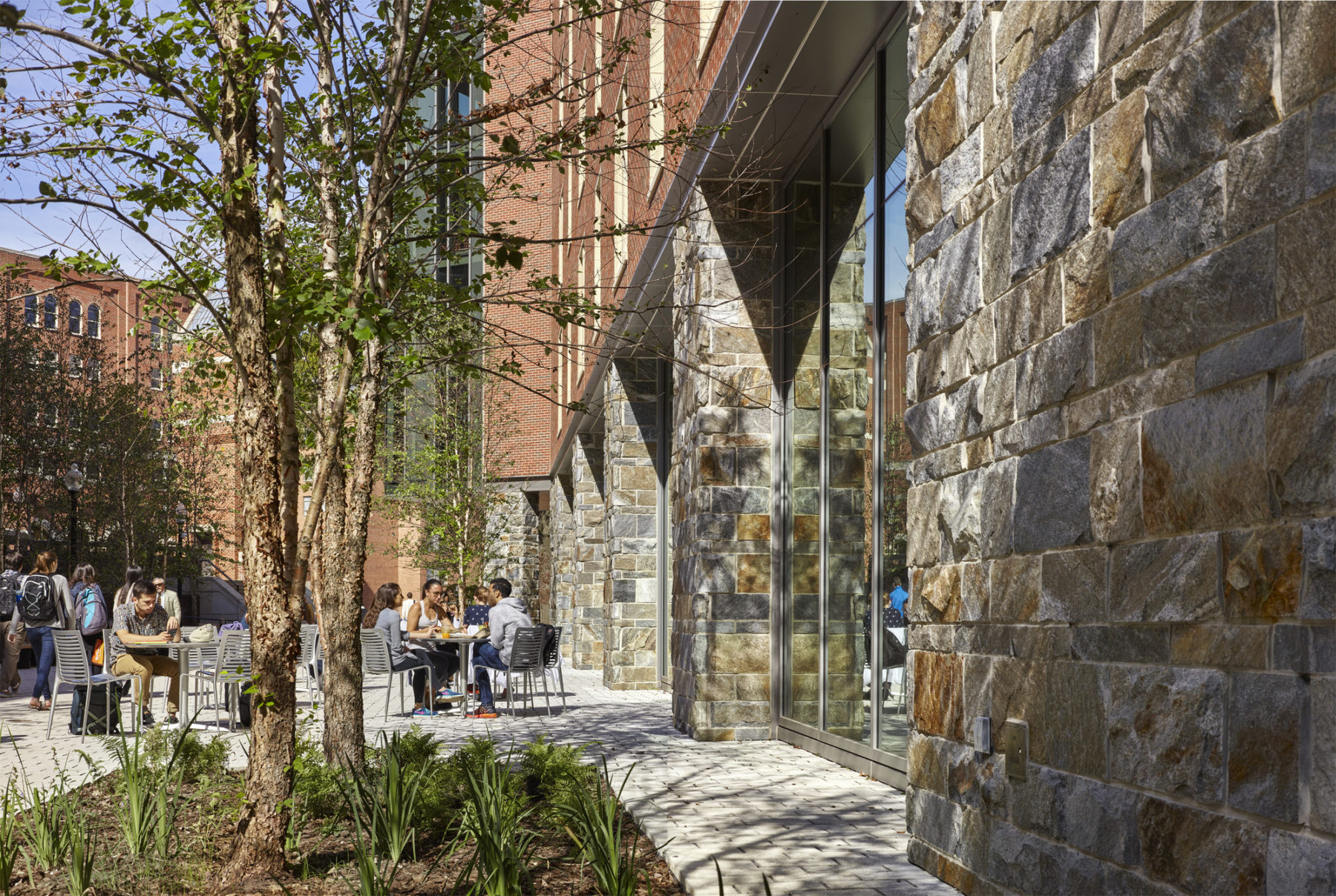
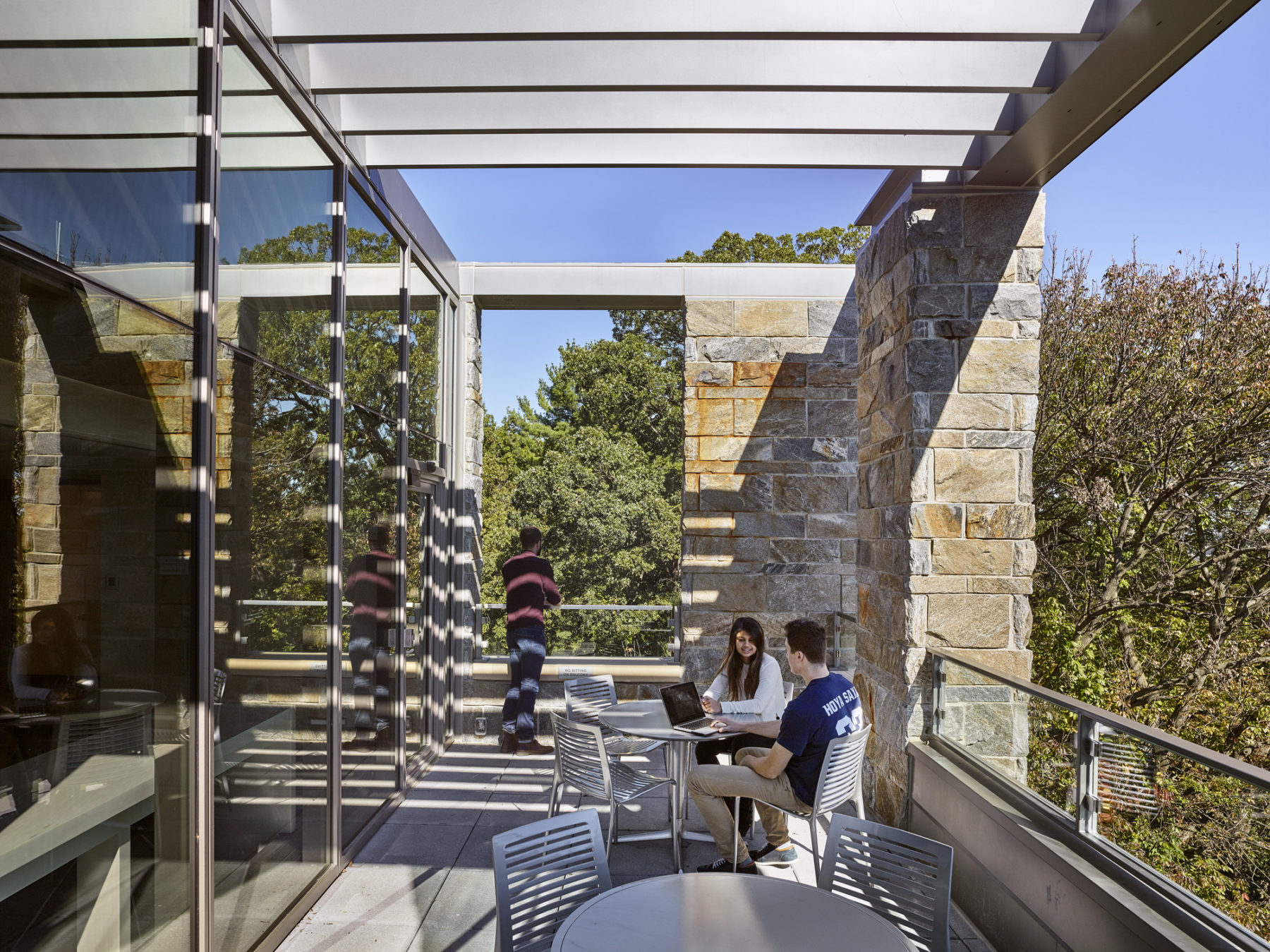
These trends are not fleeting and have become key considerations in our design thinking. As we collaborate with institutions across the educational spectrum, it will be critical to balance near-term conditions with future demands for adaptation as we plan for the ever-evolving dynamics of the campus experience.